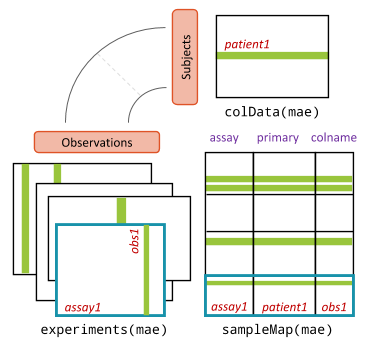SingleCellMultiModal
Overview
SingleCellMultiModal is an R package that provides a convenient and user-friendly representation of multi-modal data using MultiAssayExperiment. This package introduces a suite of single-cell multimodal landmark datasets for benchmarking and testing multimodal analysis methods via the ExperimentHub Bioconductor package. The scope of this package is to provide efficient access to a selection of curated, pre-integrated, publicly available landmark datasets for methods development and benchmarking.
Installation
if (!requireNamespace("BiocManager", quietly = TRUE))
install.packages("BiocManager")
BiocManager::install("SingleCellMultiModal")Loading packages
library(SingleCellMultiModal)
library(MultiAssayExperiment)Citing SingleCellMultiModal
Your citations are crucial in keeping our software free and open source. To cite our package see the citation (Eckenrode et al. (2023)) in the Reference section. You may also browse to the publication at PLoS Computational Biology.
Representation
Users can obtain integrative representations of multiple modalities as a MultiAssayExperiment, a common core Bioconductor data structure relied on by dozens of multimodal data analysis packages. MultiAssayExperiment harmonizes data management of multiple experimental assays performed on an overlapping set of specimens. Although originally developed for patient data from multi-omics cancer studies, the MultiAssayExperiment framework naturally applies also to single cells. A schematic of the data structure can be seen below. In this context, “patients” are replaced by “cells”. We use MultiAssayExperiment because it provides a familiar user experience by extending SummarizedExperiment concepts and providing open ended compatibility with standard data classes present in Bioconductor such as the SingleCellExperiment.

Contributions
Want to contribute to the SingleCellMultiModal package? We welcome contributions from the community. Please refer to our Contributing Guidelines for more details.
Further resources
For more information on the MultiAssayExperiment data structure, please refer to Ramos et al. (2017) as well as the MultiAssayExperiment vignette.
